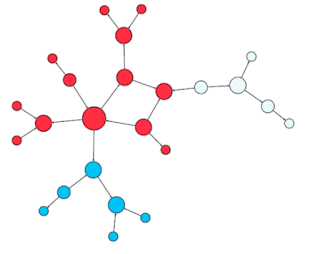On Thursday September 19, the Canadian Defence and Security Network
hosted a day-long workshop on agile procurement in Ottawa. The event provided
an opportunity for senior officials from the Department of National Defence (DND),
the Canadian Armed Forces (CAF) and Public Services and Procurement Canada
(PSPC) to engage with outside academics and commentators on the challenges of pursuing
an agile defence procurement model in Canada. This made for a full day of
stimulating and far-reaching discussion.
The Agile Procurement Workshop consisted of half-hour briefings led by
officials with follow-on roundtable discussions. First, officials from DND note
that, while many things in Canadian defence procurement are going well, Canada’s
current system for acquiring military capability may be ill-suited for a future
in which the pace of technological change can only be expected to increase. Furthermore, civilian corporations
that were previously unaffiliated with the defence sector are making their ‘game-changing’
capabilities available on civilian markets, while also shortening user-upgrade
cycles and rapidly reducing the availability of parts for existing systems. The
presenter asked: “Are we ready for what’s coming?” The consensus was that
Canada risks falling behind in an evolving procurement space. In an era in
which military equipment is software-enabled and the pace of hardware
obsolescence is increasing, DND and the CAF require flexible planning tools
that will enable them to continue to acquire and effectively sustain advanced
military capabilities, while demonstrating value for money to the Canadian
taxpayer.
The second session, delivered a CAF flag officer, considered how the CAF
sets capability requirements. In his talk, the presenter described the CAF’s
Capability Based Planning Model for defence acquisitions and compared this
system in a standard procurement project versus an agile procurement project. He
suggested that in the agile context, spending intentions, capability targets
and High Level Mandatory Requirements (HLMRs) can all be revised as a project
progresses, thereby allowing the CAF to adapt its requirements and costing to
evolving technologies and threat environments. He suggested that flexible
systems architectures are well-suited to this procurement approach. The
presenter concluded by considering how evolving requirements might change DND
relationships with industry.
The third session examined how the new Project Approval Directive is
being leveraged to streamline procurements. As part of this effort, new
authorities have been delegated to senior officials at DND to emphasize
accountability and significant advances in data analytics are being leveraged in
an interactive dashboard that will display the state of CAF readiness,
personnel and ongoing capital projects. A portion of this information is made public
on an annual basis in the Defence Capability Blueprint. Discussion focused on
the cultural shift that will be required within DND for a comprehensive embrace
of agile procurement. Academics asserted that there needs to be increased risk
tolerance and greater emphasis on intra-departmental information sharing.
The fourth session of the day covered the Consolidated Investment Fund,
with a focus on how DND defines “projects” versus “programs” and spends funds
to purchase new capabilities or sustain existing ones. The presenter informed
attendees that 173 of DND’s 333 active procurement projects have moved to a new
phase of work in the past two years. The presenter noted that 70% of the
capital projects named in Canada’s defence policy Strong, Secure, Engaged are in the costing or implementation phases.
Work is being done to streamline processes around routine procurements and to ensure
that existing governance mechanisms are used strategically on major projects.
The final sessions expanded upon several of the themes considered above.
Presenters agreed that agile procurement is necessarily iterative, adaptable
and solution-oriented. The process is conducive to sustained collaboration with
other government departments and industry. It was further agreed that the
emphasis in Canadian procurement must shift from seeking authority to being
accountable. Finally, one presenter summed up the issue of the day: “We don’t
want to be taking delivery of yesterday’s projects tomorrow.”
The academics who attended the
Agile Procurement Workshop are working on a report that responds to the
discussion summarized above and proposes concrete steps that the Government of
Canada can take to enhance defence procurement. Stay tuned!









